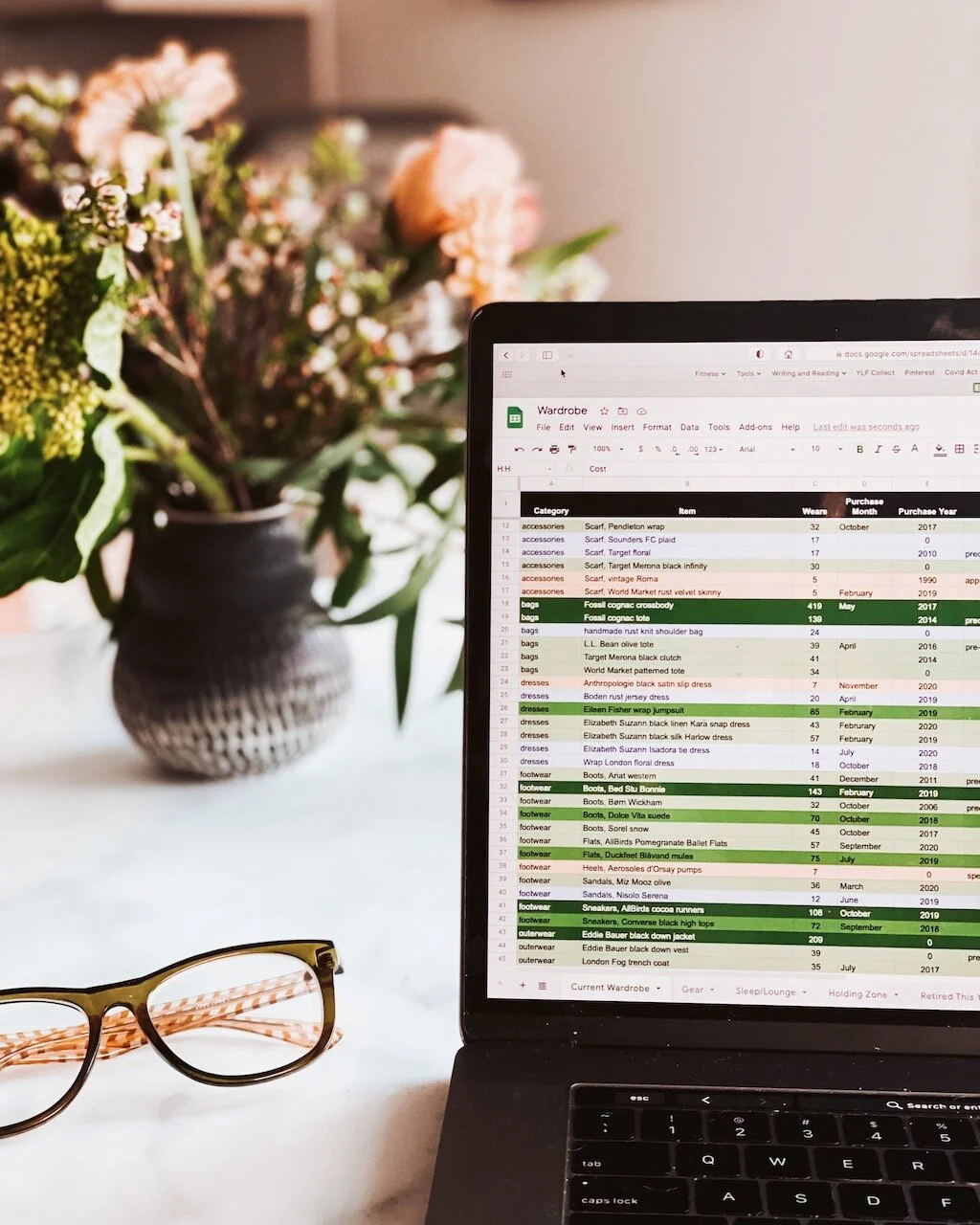Why I Always Track Everything I Wear
Every day, for much of the past decade, I’ve been writing down every item I wore. When I say that aloud, it sounds like I’m some sort of data-driven control freak, but I swear I’m not! I’ve always viewed browsing both clothing and home decor as daydreamy escapes in my life, and wardrobe tracking fills a similar niche. It’s a pleasant part of my day that’s provided me with insights far beyond knowing what clothing I wore and when.
My wardrobe tracking journal from 2007.
What I Do and How I Do It
Over the years, I think I’ve used just about every wardrobe tracking solution out there. Ten years ago, I wrote down every piece of clothing I owned in a notebook and made tally marks next to each as I wore them. Later, I used a specific closet management app that made it easy to tap photos of each item worn on a particular date.
These days, I have a two-part system. Every day, I jot down what I’m wearing in my weekly planner notebook. That way I can see what I wore on any given date, right alongside my activities for the day. Once a week or so, I log the items worn in a Google spreadsheet—a slightly higher-tech version of my old tally-mark system. Beyond the name of each item, my spreadsheet also has information about when I purchased each item, which wardrobe category it fits into (ie: dresses, pants, shoes, etc.), and how much it cost. The entire process takes around 10-15 minutes a week—less than a minute a day to write in my planner, and 5 or 10 minutes to transfer the data to the spreadsheet each weekend.
Whenever I retire an item, I move it to a separate sheet, where I can compare end-of-life statistics, and, on a more personal level, look back on and remember favorites that once lived in my closet.
The Why of It
I honestly can’t remember what drove me to start wear tracking. I assume I read about it somewhere and it seemed like an interesting experiment. As for why I’ve continued doing it all these years? There are a few reasons.
It reminds of what I wore and when. I’m an incorrigible outfit-repeater and, though I don’t flatter myself to think that anyone else really cares that I wore the exact same thing three Wednesdays in a row, I’d prefer not to show up to every single meeting with the same people wearing the same thing. I get some joy out of the creativity of fashion, and part of that joy for me is appearing out in the world in different clothing combinations.
It shows me how well my clothing wears. The cost-per-wear (CPW) metric isn’t the be-all, end-all of purchasing decisions, but it’s fascinating to learn how much it costs just to put on a shirt, some shoes, and a pair of jeans each day. It’s also taught me that clothing doesn’t last forever, so I can plan for (and feel less guilty about) regular replacements.
It codifies memories. Looking at my old wear-tracking journals is a bit like flipping through a scrapbook or photo album. Different clothing was associated with different points in my life and previous version of me.
It keeps me from forgetting what I own. Keeping a list of all my clothing items means nothing is ever lost in the back of the closet. It also provides a hard number that reminds of just how much I have. As someone who values mindfulness, I appreciate that dose of honesty about my possessions.
Wear tracking with a Google spreadsheet.
If I had to point to one single reason I’ve kept at my wardrobe tracking for almost ten years, it would be that last point. As a result of this practice, I know exactly what I own and exactly what I wear. A decade of simple tracking has led me to a wardrobe filled with pieces I love and value. It’s made me clearheaded and realistic about my clothing, and it’s kept me from fooling myself into believing that any new purchase will change my life.
It comes down to this: I track my wardrobe because my possessions are worthy of my mindfulness. Would you, or do you, do the same?







